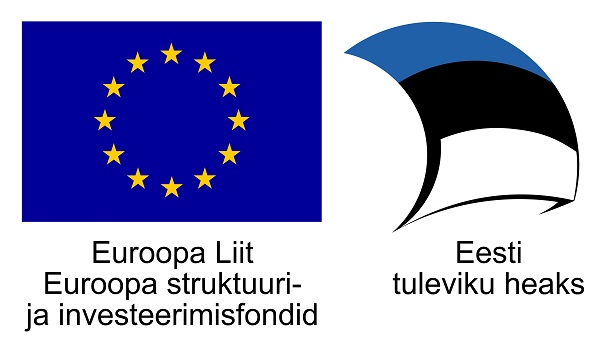Studies and strategies
Creative industries policy in Lithuania
 Rasius Makselis
Rasius Makselis
Head of Strategic Planning Department, Lithuanian Ministry of Culture
The concept of creative industries has been considered in Lithuania since 2003, when the first studies in this field were conducted (by Dr M. Starkevičiūtė). Maps of the creative industries in Utena and Alytus counties were compiled in 2004–2005 (head of the project, Dr G. Mažeikis). The Strategy for the Promotion and Development of Creative Industries was prepared and approved in 2007. It provided a definition of creative industries and identified priority areas for development. Creative industries are defined in these documents as ‘activities based on an individual’s creative abilities and talent, the objective and result of which is intellectual property and which can create material well-being and work places’. The concept of creative industries in Lithuania includes the following: crafts, architecture, design, cinema and video art, publishing, visual arts, applied arts, music, software and computer services, the creation and broadcasting of radio and television programmes, advertising, dramatic art, and other areas which unite various aspects of cultural and economic activities.
Support measures
In 2009, as a result of cooperation between the Ministry of Culture and the Ministry of Economy, the concept of creative industries was included in the Lithuanian Strategy for the use of EU Structural Funds for 2007–2013 and in the Operational Programme for Economic Growth. As the Ministry of Culture and the Ministry of Economy were seeking to define specific measures targeted at the promotion of creative industries in Lithuania, it was decided that an arts incubator network should be established in Lithuania next to the existing business incubator network, and that funding from EU structural funds should be allocated for the development of this new network. The usefulness of these measures was confirmed via an analysis of the operation of creative industries arts incubators in a number of EU countries conducted by the Ministry of Culture. To date, funding for nine arts incubator projects has been allocated until 2013 according to the ‘Assistant 2’ EU structural funds measure, which is administered by the Ministry of Economy. The budget for the programme is approximately 17 million euros.
The Ministry of Economy has also introduced creative industries into the national innovation policy, clustering programmes and export measures. At least two creative industries cluster projects are being prepared at the moment. The Ministry of Economy also provides support for export projects including participation in international fairs. These support mechanisms are also funded by EU Structural Funds.
Recent developments
With the development of a network of creative industries, the National Association of Cultural and Creative Industries, which includes approximately 40 members, was established in Lithuania in 2009. An opportunity study regarding the National Creative and Cultural Industries Programme was prepared on the initiative of the association. The data presented in the study show that the contribution of creative industries companies to Lithuanian GDP grew from 2 per cent (LTL 2.1 billion) in 2001 to 5.2 per cent (LTL 4 billion) in 2006. According to data provided by the Department of Statistics of the government of the Republic of Lithuania, 6 149 companies with a total of 61 297 employees operated in this sector in 2007. This accounted for 8 per cent of the total number of companies operating in Lithuania and 4 per cent of the total number of employed people in Lithuania. The growth of companies in the creative industries sector was 8 per cent in 2006–2007, and the number of employees in the sector grew 2.8 per cent, which shows that this sector plays an important role in the Lithuanian economy.
Based on the aforementioned opportunity study, the Lithuanian National Programme for Cultural and Creative Industries was prepared and presented to the Ministry of Education and Science in 2009. There is a plan to use assistance from EU structural funds to implement this programme and it aims to specifically support synergy via a system of arts education, cultural infrastructure and creative business. The budget for the programme is approximately 3 million euros.
The very existence of this programme is evidence that the creative sector in Lithuania is acknowledged as an important area of innovation next to areas such as laser physics or biotechnology.
Additional support for education and the development of creative entrepreneurs was provided in 2010. The National Association for Cultural and Creative Industries plans to use this support for the preparation of further complex development projects.
Regional cooperation
Creative industries are becoming a major area of regional cooperation as well. When Lithuania held the presidency in the Council of the Baltic Sea States, the conference held by the Nordic Council Ministers Office in Lithuania, the Ministry of Foreign Affairs and the Ministry of Culture on 23–24 February 2010 in Vilnius emphasised the need to promote the cooperation of the Baltic Sea countries in the area of creative industries.
The national policy
The Ministry of Culture is officially responsible for the national policy in the field of creative industries. The national strategy for the development of creative industries has been adopted by the Minister of Culture. The Ministry of Culture along with the International Cultural Programmes Centre provides support for mapping creative industries, collaborates with the State Department of Statistics and organizes conferences and seminars related to the creative industries. The ministry has financed a Lithuanian adaptation of the David Parrish book “T-Shirts and Suits”, and the creation of the portal www.kurybinesindustrijos.lt.
The Ministry of Culture takes active part in the consultations held by the government of the Republic of Lithuania concerning the long-term strategic plan, Lithuania 2030. Since a creative civil society is one of the priorities discussed in this strategy, the cultural economy and creative industries are particularly important sectors in achieving this aim.





